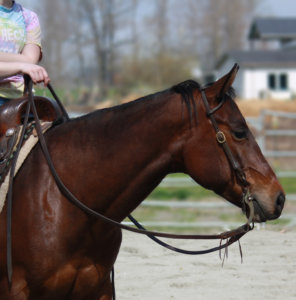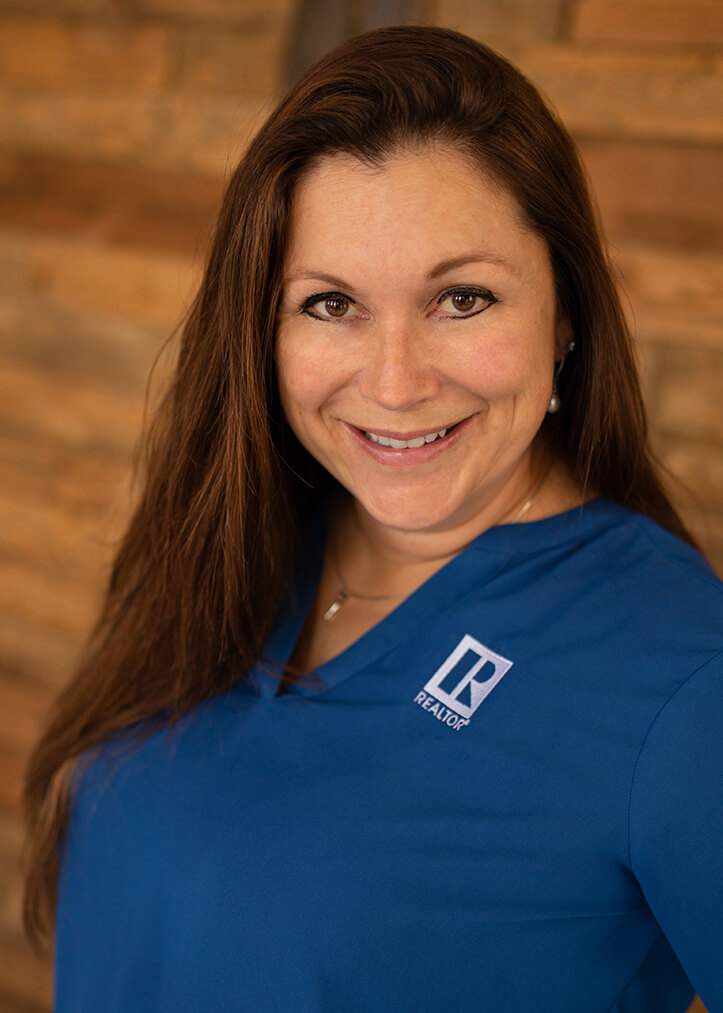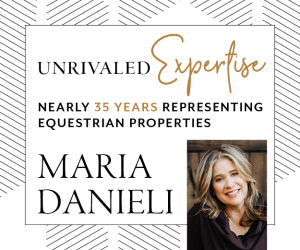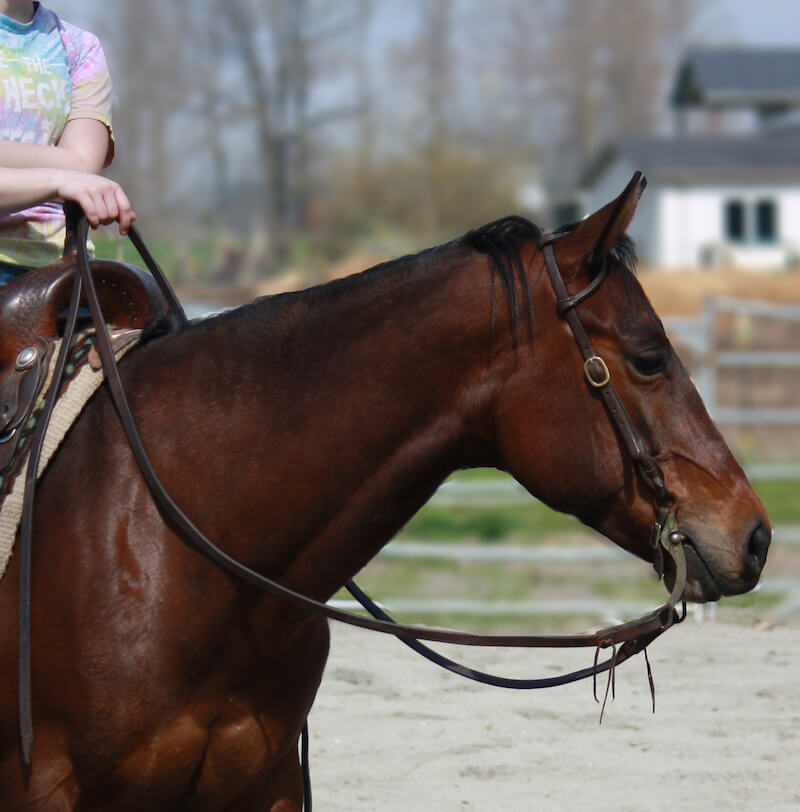Six Common Tack Misuses and Maladjustments
by Allison Trimble, Willfully Guided Horsemanship
In my travels as a clinician, I get to meet a lot of wonderful people and their equine friends. It is a new experience for me to be outside of the performance horse world and I really enjoy it. However, one thing that I run across often is tack being used improperly. For a piece of equipment to be effective, it needs to be used as it was designed and intended. Many training issues can boil down to ill fitting, or improperly used tack and equipment. Here are a few of the common misuses I see:
Chin strap misplaced on a leverage bit: For a leverage bit to work properly, it must have a balance between the shank of the bit, the mouthpiece and the chinstrap. On a number of leverage bits there is another extra loop on the shank where the mouthpiece connects. I often see the chin strap hooked to this loop, which is intended for the reins, or a second set of reins for more direct rein if needed. The proper place for the chinstrap to be hooked is the same loop as the headstall.

Bit too loose or too tight: This is most often seen in a leverage bit. The bit is designed to sit in the horse’s mouth where it either rests at the top of the mouth, or leaves one wrinkle. If it is tighter than this, or looser than this, it can apply uneven and unpleasant pressure. I see a lot of leverage bits hanging in a horse’s mouth—kind of rattling around in there. This can be even more unpleasant for the horse with a ported bit because the pressure is applied at the wrong place in the roof of the mouth.
Chin strap behind the reins on a snaffle: A snaffle bit is meant for direct rein pressure. There is no leverage in this bit, and it is crucial that it open laterally. I see many people putting the chin strap behind the reins, as it would be on a leverage bit, anchoring it together, when it should be in front of the reins. The only purpose of a chin strap on a snaffle bit is to keep the bit from pulling through the horse’s mouth.
Snaffle bit used with a split ear headstall: The snaffle bit is made to be used with a brow band headstall. A leverage bit works on the poll of a horse, so a split ear is appropriate. When the bit is activated, the cheek pieces tighten. In a snaffle bit there is no poll pressure, so when used the cheek pieces lift away from the horse’s face. It is possible for a split ear headstall to come loose when used with a snaffle. A brow band headstall may be used with a leverage bit, but not in the reverse.
Back cinch not anchored to front cinch: There is a hobble between the front and rear cinch that should always be attached. Sometimes in changing cinches, or just through use, this strap disappears and no one notices. If the back cinch is unanchored, it is possible for it to slide back and in effect “flank” the horse, similar to what is done with rough stock. Unless you want to be a bronc rider, always make sure this strap is there.
Martingale too tight: The martingale is designed to set a barrier for a horse that wants to elevate his head; it is not designed to wrench his head down. I personally rarely ride with one, but if I do the proper adjustment is that the rings meet the throatlatch of the horse when his head is in a resting position. Anything shorter is cheating and anything looser is ineffectual.
The last “misuse” of tack is really a personal pet peeve, but worth mentioning: Stirrup over the horn when saddling. The stirrup easily slides back, out of the way, to cinch the horse. There is no need to put the stirrup over the horn, potentially scuffing the horn and encouraging the seat skirt to fold up overtime.
My best advice when assessing your tack is to know the intended use of the equipment. Then, from the ground, activate the bit, or tack, and see how it works. Use your critical mind and common sense to observe tack “at work” and the horse’s response to it.
Published June 2013 Issue

Allison Trimble is a Realtor® specializing in equestrian properties, farm and ranch properties, and residential real estate. She’s a former horse trainer, and a current owner, breeder, and non-pro competitor in cow horse and reining events. For many years, Allison wrote a monthly column for The Northwest Horse Source.
Learn more at www.allisonblakerealestate.com






